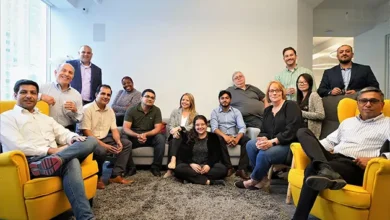Package Delivery Trends: What to Expect in 2024

Introduction
In today’s fast-paced world, package delivery has become a crucial component of the global economy. The rise of e-commerce and the growing demand for fast, efficient delivery services have made it imperative for both consumers and businesses to stay updated with the latest trends and innovations in the package delivery industry. As technology continues to advance and consumer expectations evolve, understanding these changes is essential for navigating the future of logistics and ensuring seamless service.
The package delivery sector has seen dramatic transformations over recent years, driven by technological advancements, evolving consumer preferences, and increased environmental awareness. From the integration of artificial intelligence to the adoption of sustainable practices, staying abreast of these developments can provide valuable insights into how the industry is shaping up. This article delves into the current trends, technological innovations, challenges, and future predictions in package delivery, offering a comprehensive look at what to expect moving forward.
1. Current Trends in Package Delivery
Increased Demand and Growth
The package delivery industry is experiencing unprecedented growth, largely fueled by the expansion of e-commerce. According to recent statistics, global e-commerce sales have surged, leading to a corresponding rise in package delivery volumes. This boom in online shopping has intensified the need for efficient and reliable delivery services, pushing companies to innovate and enhance their operational capabilities.
As more consumers turn to online platforms for their shopping needs, the volume of packages needing delivery continues to rise. This trend is not just a temporary spike but a significant shift in consumer behavior, with online shopping becoming a staple in daily life. Businesses are responding by scaling up their delivery infrastructure, investing in advanced logistics solutions, and exploring new technologies to handle the increasing demand. The challenge lies in managing this growth while maintaining high standards of service and efficiency.
Sustainability Efforts
In response to growing environmental concerns, the package delivery industry is increasingly focusing on sustainability. Companies are adopting green logistics practices, which include optimizing delivery routes to reduce fuel consumption, using eco-friendly packaging materials, and investing in electric or hybrid delivery vehicles. These efforts aim to minimize the environmental impact of package delivery operations and contribute to broader sustainability goals.
Eco-friendly packaging is one of the key areas of focus. Many companies are transitioning to recyclable or biodegradable materials, reducing the reliance on single-use plastics. Additionally, the shift towards electric vehicles is not only a step towards reducing carbon emissions but also a move to improve overall operational efficiency. By incorporating these practices, the industry is making strides towards a more sustainable future while addressing consumer demand for environmentally responsible services.
Last-Mile Delivery Innovations
The concept of “last-mile delivery” refers to the final leg of the delivery journey, from a distribution center to the customer’s doorstep. This stage is often the most complex and costly, prompting innovative solutions to streamline the process. Delivery drones and autonomous vehicles are at the forefront of these innovations, promising to revolutionize how packages are delivered.
Drones offer the potential for rapid and efficient delivery, especially in urban areas with heavy traffic or remote locations. Autonomous vehicles, including self-driving delivery vans, are being tested to handle deliveries with minimal human intervention. Additionally, smart lockers and delivery hubs are emerging as practical solutions for improving convenience and reducing delivery times. These innovations aim to enhance the efficiency of last-mile delivery, providing faster and more reliable service to customers.
2. Technological Advancements Shaping the Industry
AI and Machine Learning in Logistics
Artificial Intelligence (AI) and machine learning are transforming the package delivery industry by optimizing various aspects of logistics. AI algorithms are being used to enhance route planning, predict delivery times, and manage inventory. By analyzing vast amounts of data, AI can identify the most efficient routes, taking into account factors such as traffic, weather conditions, and delivery urgency.
Machine learning models are also being employed to forecast demand and adjust delivery schedules accordingly. This predictive capability helps companies manage their resources more effectively, ensuring that they can meet customer expectations without overburdening their infrastructure. AI-powered tracking systems provide real-time updates to customers, improving transparency and reducing uncertainty in the delivery process.
Blockchain Technology for Enhanced Transparency
Blockchain technology is gaining traction in the package delivery industry due to its ability to provide enhanced transparency and security. By creating an immutable ledger of transactions, blockchain ensures that all stages of the delivery process are recorded and verifiable. This technology helps in preventing fraud, reducing errors, and improving accountability.
For instance, blockchain can track a package’s journey from the point of origin to its final destination, providing a tamper-proof record of each step along the way. This level of transparency builds trust with customers, who can track their shipments with confidence. Additionally, blockchain can streamline payment processes and facilitate faster resolution of disputes, further enhancing the efficiency of the delivery system.
Internet of Things (IoT) Integration
The Internet of Things (IoT) is another key technological advancement impacting the package delivery industry. IoT devices, such as sensors and trackers, are being used to monitor the condition and location of packages throughout their journey. These devices provide real-time data on factors such as temperature, humidity, and movement, ensuring that packages are handled appropriately and arrive in optimal condition.
IoT integration also improves delivery accuracy by allowing companies to monitor and manage their fleets more effectively. Real-time tracking and analytics enable better decision-making, reducing delays and enhancing the overall customer experience. As IoT technology continues to evolve, its applications in package delivery are expected to expand, offering even greater opportunities for efficiency and innovation.
3. Challenges and Solutions in Modern Package Delivery
Delivery Delays and Disruptions
Despite advancements in technology, delivery delays and disruptions remain a common challenge in the package delivery industry. Factors such as weather conditions, traffic congestion, and unforeseen logistical issues can impact delivery schedules and customer satisfaction. To address these challenges, companies are investing in advanced forecasting tools and contingency planning.
Predictive analytics and real-time monitoring systems help companies anticipate potential disruptions and take proactive measures. For example, route optimization algorithms can adjust delivery paths in response to traffic or weather changes, minimizing delays. Additionally, effective communication with customers is crucial in managing expectations and providing timely updates on delivery status.
Security and Theft Issues
Package theft is a growing concern for both consumers and delivery providers. As online shopping becomes more prevalent, the risk of theft from porches and delivery drop-off points increases. To combat this issue, companies are implementing various security measures, such as tamper-evident packaging, secure delivery options, and smart lock systems.
Innovations in security technology, such as GPS tracking and video surveillance, are also being used to deter and address theft. Companies are exploring solutions like in-home delivery services and secure package lockers to provide safer options for receiving packages. By enhancing security measures and offering more secure delivery options, the industry aims to protect both packages and customer trust.
Managing Customer Expectations
Managing customer expectations is a critical aspect of the package delivery process. With rising demands for faster and more reliable service, it is essential for companies to communicate effectively with customers. Providing accurate delivery estimates, offering real-time tracking updates, and addressing customer inquiries promptly can significantly improve the overall experience.
Tools such as automated customer service chatbots and mobile apps are being used to enhance communication and streamline interactions. By offering transparent and responsive customer service, companies can build stronger relationships with their customers and improve satisfaction. Addressing customer concerns and feedback proactively helps in maintaining a positive reputation and fostering long-term loyalty.
4. The Future of Package Delivery: Predictions and Developments
Emerging Technologies
Looking ahead, the package delivery industry is poised to witness further technological advancements. Innovations such as autonomous delivery robots, advanced drone capabilities, and next-generation tracking systems are expected to shape the future of logistics. These technologies promise to enhance efficiency, reduce costs, and improve the overall customer experience.
For instance, next-generation drones with longer flight ranges and better payload capacities could revolutionize delivery in remote or hard-to-reach areas. Similarly, autonomous delivery robots equipped with advanced sensors and navigation systems could handle last-mile deliveries more effectively. As these technologies mature, they will play a significant role in transforming the landscape of package delivery.
Changing Consumer Preferences
Consumer preferences are continually evolving, and the package delivery industry must adapt to these changes. Trends such as the increasing demand for same-day delivery, personalized service options, and sustainable practices are influencing how companies approach their delivery strategies. Understanding these preferences is crucial for staying competitive and meeting customer expectations.
The shift towards more personalized and flexible delivery options, such as time-slot deliveries and customizable delivery windows, reflects the growing desire for convenience and control. Companies that can offer tailored solutions and address specific customer needs will be better positioned to succeed in a competitive market. Additionally, the focus on sustainability will continue to drive changes in packaging and delivery practices, aligning with consumers’ growing environmental concerns.
Regulatory and Industry Changes
The package delivery industry is also expected to experience regulatory and industry changes that will impact how services are delivered. Regulatory bodies are likely to introduce new standards and guidelines related to technology, safety, and environmental impact. Staying informed about these changes and adapting to new regulations will be essential for compliance and operational efficiency.
Industry standards and best practices will continue to evolve as new technologies and methodologies emerge. Companies that actively participate in industry forums and collaborate on developing new standards will have a competitive advantage. By embracing these changes and staying ahead of regulatory developments, businesses can ensure that they are well-positioned for future success.
Conclusion
The package delivery industry is at a pivotal juncture, with rapid advancements in technology, shifting consumer preferences, and increasing environmental awareness driving significant changes. Staying informed about the latest trends and innovations is essential for navigating this evolving landscape and ensuring effective and efficient delivery services.
As we look to the future, the continued integration of advanced technologies, the focus on sustainability, and the adaptation to changing consumer expectations will shape the direction of the industry. Companies that embrace these changes and proactively address challenges will be better equipped to thrive in a dynamic and competitive environment.





